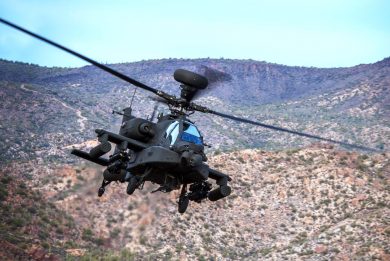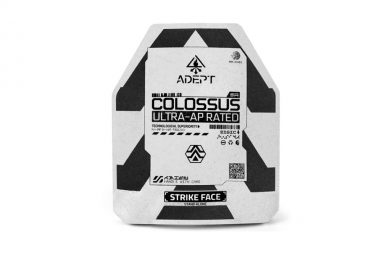PAS 2025 – UVision widens its commercial footprint and its portfolio, with the HERO-120 air-launched capability
At the Paris Air Show UVision, one of the leading companies in the loitering munitions domain, would have showcased the new air-launched capability of its HERO-120. However, the physical sequestration of Israeli stands did not allow this to happen
“We have currently customers in 20 different nations, and we are expanding, and the addition of the air-launched capability for our HERO-120 is quite important for us, because it will allow helicopters of different kinds to launch our HERO family of loitering munitions from standoff positions,” Ran Gozali, the company CEO told EDR On-Line. The interview took obviously place via Teams, during the Paris exhibition, therefore we considered appropriate to include it in the PAS 2025 articles.
The air-launched development was carried out in cooperation with US based defence integrator Fulcrum Concepts LLC and with Mistral Inc. “It allows to launch from standoff distance, ensures mid-course navigation in GPS-denied environment, and then the HERO-120 loiters above the targeting area,” the CEO explains, adding that “the system allows to hand-over the loitering munition from the launching helicopter to any ground force that is up front.” This can take control over the loitering munition and even extend its range to effective targets.
The munition can be launched at altitudes from 100 up to 8,000ft, no data about the helicopter speed envelope being provided. “We did tests on a UH-60 Blackhawk, and we have passed significant stages,” Dr. Gozali said.
EDR On-Line got the confirmation that the munition is exactly the one which was first developed to be ground-launched; with a mass at launch of 14.5 kg, of which 4.5 kg represent the warhead, the HERO-120 can easily fit under attack and utility helicopters stub-wings, UVision having developed a four-munition launcher, the UH-60 being able to carry two of them, one under each wing.
A kit of four omnidirectional antennas, which ensure the link between the aircraft and the munitions, is installed over the stub-wing. EDR On-Line understood that with these antennas the system has a range of around 40 km, however the handover capability allows to extend it even over the 60 km of the ground system, considering the different trajectory and dynamics. The munitions ejection system is pneumatic, and a simple fire control console is integrated into the helicopter cockpit to ensure their control in the final phase of the mission, when the operator must validate the target positive identification, or eventually shift the munition towards a higher priority target that appeared in the same area.
New modes of operation are down the development pipeline. “What we have already tested, and which is progressing well, is the capacity to simultaneously launch loitering munitions with different payloads, some lethal, some electronic warfare, some ISR,” UVision CEO unveiled. This will extend the intelligence gathering range of the helicopter, it will generate a protective bubble to allow it penetrating A2/AD areas, provide accurate battle damage assessment, in a way similar to what 6th generation aircraft programmes are envisaging for future fighters, in which manned platforms will exploit air-launched effects, ALE in short, to improve their overall mission capabilities.
The multiple-munition capacity will be based on artificial intelligence-based algorithms; “we are currently developing this capability stage by stage. We have already capable to deploy multiple munitions operating together, but we don’t want them to operate autonomously at this stage. It is a phased approach, we are investing heavily in those algorithms, and we have a group of dedicated people which is dealing with these issues,” Ran Gozali stated.
The CEO confirmed that the focus for the launch effect is on the HERO-120, while the two lighter munitions, the HERO-30 and the HERO-90 being considered pure infantry systems. As for the 50 kg, 150 km HERO-400, this is considered for medium range air-launch effects, EDR On-Line understood.
In the US UVision is moving towards testing its HERO-12 capability also on AH-64 Apaches, and is already talking to major European helicopter producers, to extend this capability also to their utility and combat aircraft.
In the United States the US subsidiary, UVision USA together with Mistral Inc. are submitting the HERO family of Loitering Munition for the US Army
LASSO (Low Altitude Stalking and Strike Ordnance) programme. With an increasing customer base and a growing demand for its HEROs, UVision has strengthened its supply chain and multiplied its assembly lines. “We increased our production capacity in Israel, but we also have production sites abroad, two in the United States, one in Stafford, Virginia, and one in Charleston, South Carolina, the two plants of UVision USA, one in Italy in Domusnovas, Sardinia, the RWM Italia plant, and one in India, in Hyderabad, Telangana state, where our daughter company AVision Systems is located,” the CEO confirmed.
Images courtesy UVision









